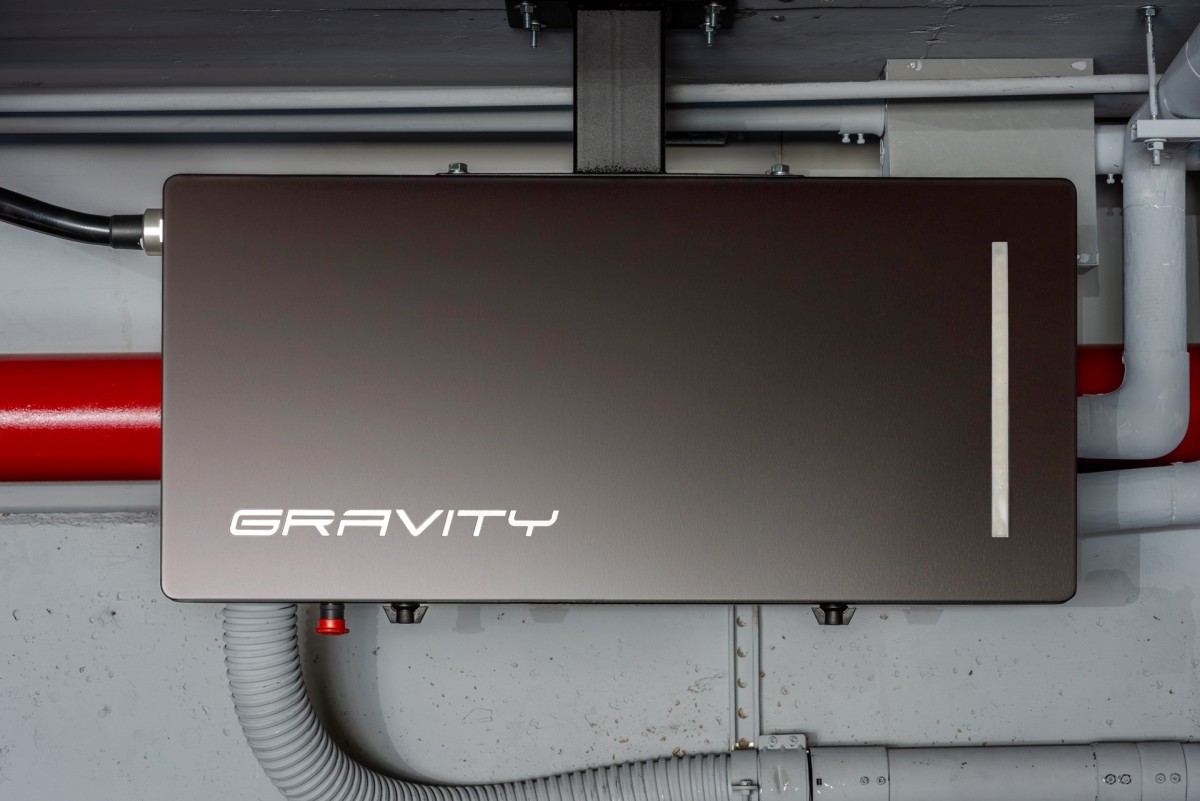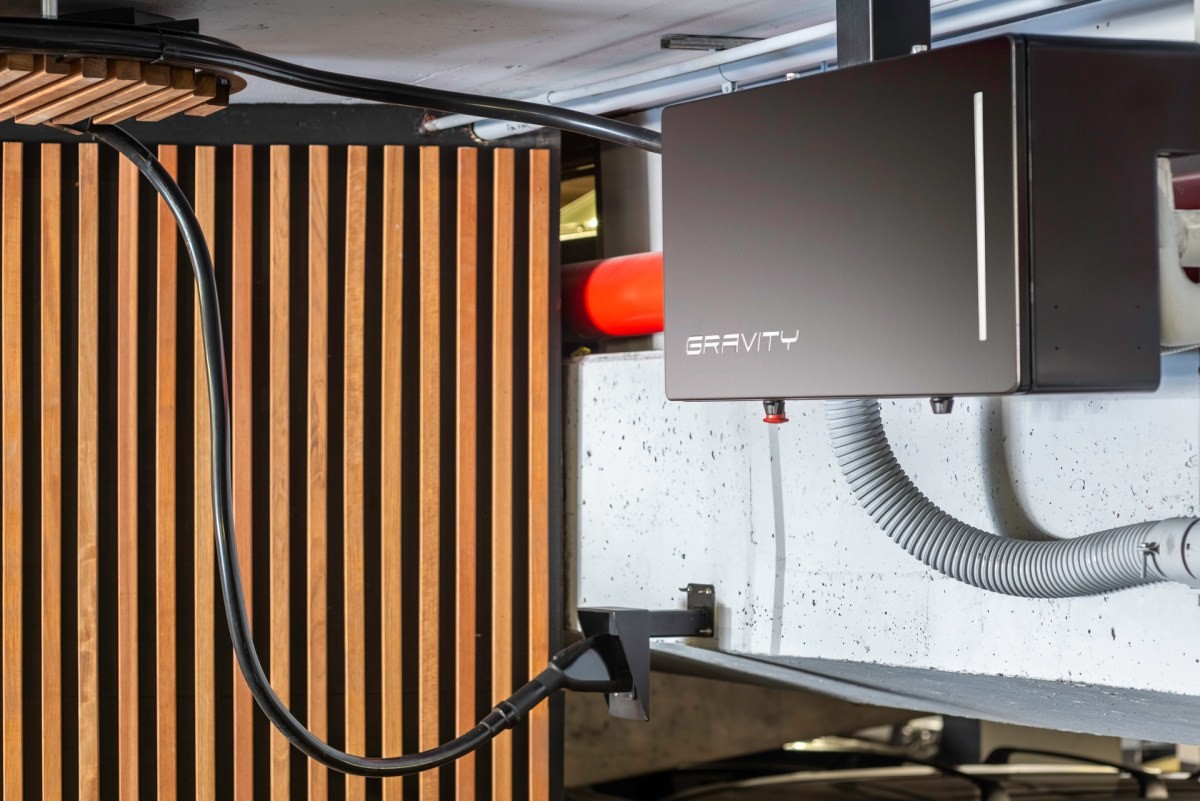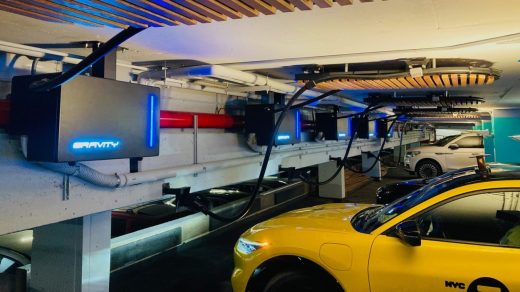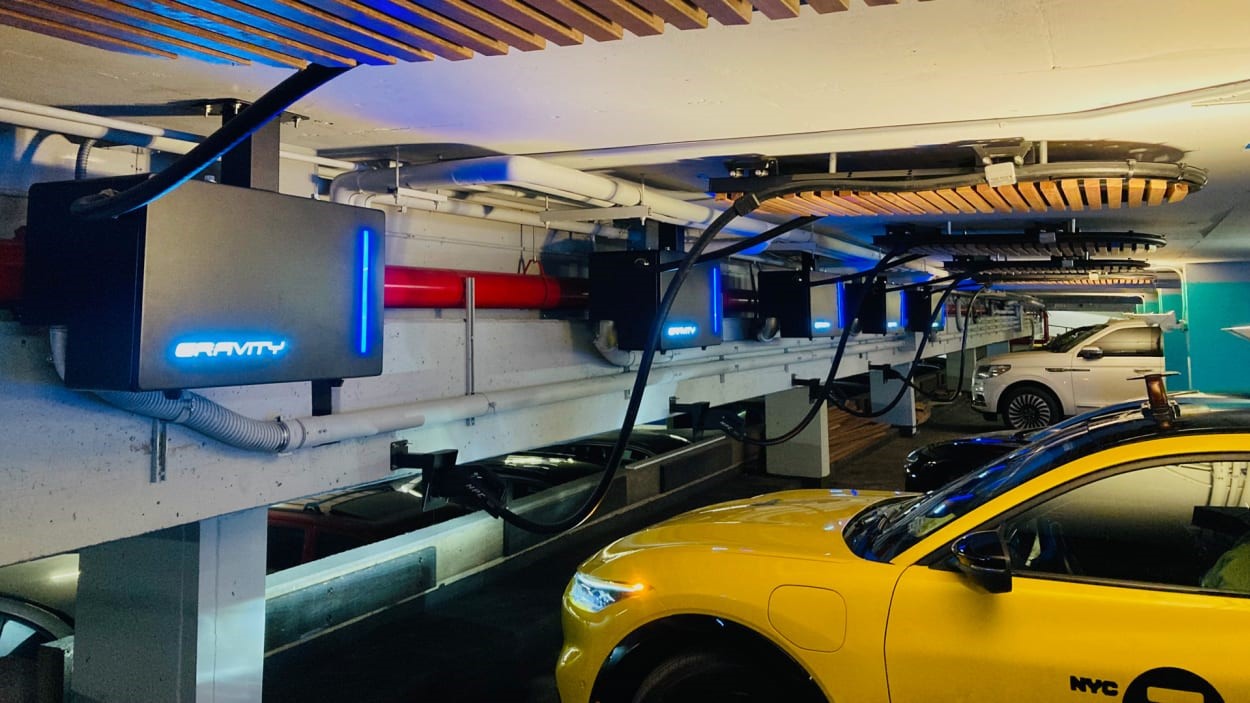These EV chargers are the size of a suitcase and can charge a car in 5 minutes
By Adele Peters
Inside a parking garage in Manhattan, new EV chargers hanging on the wall are each around the size of a carry-on suitcase. But they’re capable of charging an EV with 200 miles of range in five minutes—and the system can also share power with the rest of the building.
Gravity, the startup behind the technology, announced today that it raised a new seed round of funding led by Google Ventures. Erik Nordlander, a general partner at GV, said in a statement that the startup is doing something “fundamentally different” in EV charging, making it possible to scale up high-speed charging.
Two years ago, Gravity founder Moshe Cohen wanted to help convert New York’s taxi fleet to electric vehicles. He commissioned the city’s first Tesla Model Y cab. But he soon realized that, in order for a fleet of electric taxis in Manhattan to be profitable, they’d have to be able to charge locally, and the existing infrastructure didn’t exist for that to easily happen.

“We thought initially, oh, we’ll modify some existing equipment and design spaces to accommodate it,” Cohen says. “And quickly, we understood that that was impossible. Literally, existing equipment wouldn’t fit under the ceiling with the clearance area of garages.”
Existing “fast” chargers were also too slow for the needs of a taxi fleet, where every minute counts. Installing charging equipment often also involves an expensive, slow process of working with a utility to set up new connections to power mains. Cohen decided to pivot from a focus on taxis to find a better way to charge cars.
The new technology, with charging points that the company calls “distributed energy access points,” or DEAPs, instead of chargers, is designed to interface with the electric grid. It avoids straining the grid by adjusting the power to chargers second by second and working within the building’s existing capacity for peak demand. Over the long term, if thousands of the chargers are connected to the grid, they can also help stabilize it by dynamically adjusting when there’s more solar or wind power available. Meanwhile, systems in individual buildings will be able to send power back to that building for other uses.
“Essentially, we can share the power on a real-time basis with the rest of the building,” Cohen says. “We’ll be able to send power back from parked car batteries to the building when needed, in order to balance out the consumption.” (The company will need to get UL certification for “bidirectional” charging before it can begin to do this, but the capability is already in the technology.)
The company’s software manages how the power gets to cars; at an airport parking lot with rental EVs, for example, it would be possible to send more power to a car that’s just about to be picked up by a customer. And if dozens of EVs are sitting unused at a given time, they could also help provide power to other cars through the system.

In the first installation of the equipment, with 24 DEAPs in the Manhattan garage, it was possible to add the system without adding new utility connections. In many cases, Cohen says, buildings already have enough wiring for peak demand to be able to handle EV charging if the system uses Gravity’s approach.
The chargers are much more powerful than most, with 500 kilowatts of energy (other fast chargers are much larger, but typically only 350 kilowatts). Right now, EVs available in the U.S. aren’t designed to accept more than 350 kilowatts of energy, so they can’t make use of the chargers’ full potential. But the technology to work with 500 kilowatt chargers already exists—it’s in some Chinese cars—and Cohen believes that automakers here will soon move to cars that can charge faster.
“My departure point with any company is that new technology has to be cheaper, faster, and more convenient than even current technology,” he says. “So, I think anyone out there that is giving you an experience that’s worse than a gas station is already obsolete.” With an upgraded car, Gravity’s tech could add 200 miles of range in five minutes. A current EV that can charge relatively quickly, like the Kia EV6 (with a peak speed of 240 kilowatts), could go from no charge to 80% in 15 minutes using Gravity’s charger. That’s compared to the nine or 10 hours it would take a typical garage charger of the same size.
In the future, the company also plans to roll out home EV chargers that can both charge more quickly and also manage energy for the rest of the home. “It’s going to charge 5 or 10 times faster,” Cohen says, “but also it’s going to lower your utility bills.”
(21)



